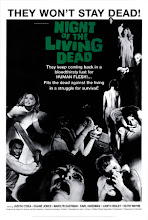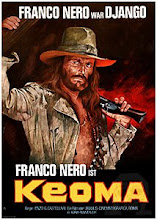
UK 1939 b&w
Director George King Writers A.R. Rawlinson, Ronald Fayre
Cast Tod Slaughter (Chevalier Lucio del Gardo), Marjorie Taylor (Cecile de Brisson), John Warwick (Lucien Cortier), Aubrey Mallalieu (Monsieur de Brisson)
 Since British-born Boris Karloff was working almost exclusively in Hollywood, Tod Slaughter is Britain's first home-grown horror superstar, an unmitigated ham in the grand tradition of Karloff and Bela Lugosi. Like Lugosi, whose stage portrayal of Dracula sealed his fate in the talkies as screen villain supreme, Slaughter followed a similar path. Born Norman Carter Slaughter in 1885, he was an East End stage actor renowned for his revivals of Victorian “blood-and-thunder” melodramas – pantomimes of pure evil designed for a less discriminating theatre crowd, but which were still popular amongst bourgois thrill-seekers. From 1934 Slaughter starred in a series of low-budget films based on his most popular performances, almost always cast as the villain. He's equally memorable in the title role in Sweeney Todd: The Demon Barber Of Fleet Street from 1936, and as the lunatic homicidal financier in The Face At The Window (1939), made just before the start of World War 2, at which point Britain banned the production of ghoulish-themed films (on account of the horror-show on their own front doorstep).
Since British-born Boris Karloff was working almost exclusively in Hollywood, Tod Slaughter is Britain's first home-grown horror superstar, an unmitigated ham in the grand tradition of Karloff and Bela Lugosi. Like Lugosi, whose stage portrayal of Dracula sealed his fate in the talkies as screen villain supreme, Slaughter followed a similar path. Born Norman Carter Slaughter in 1885, he was an East End stage actor renowned for his revivals of Victorian “blood-and-thunder” melodramas – pantomimes of pure evil designed for a less discriminating theatre crowd, but which were still popular amongst bourgois thrill-seekers. From 1934 Slaughter starred in a series of low-budget films based on his most popular performances, almost always cast as the villain. He's equally memorable in the title role in Sweeney Todd: The Demon Barber Of Fleet Street from 1936, and as the lunatic homicidal financier in The Face At The Window (1939), made just before the start of World War 2, at which point Britain banned the production of ghoulish-themed films (on account of the horror-show on their own front doorstep).
 The Face In The Window opens in Paris, 1880. A series of dastardly murders is attributed to a wolf-like creature called “Le Loup” (or “The Wolf”), whose crimes are preceded by its blood-curdling howl and slobbering, fanged and bristling visage at the victim's window. Parisian banker Monsieur de Brisson asks for help from his well-to-do friend and bank customer Chevalier del Gardo (Tod Slaughter) after a well-timed heist, in order to assist his failing credibility. Del Gardo, with his wolfish charms and fake grin framing his incisors, is more interested in getting his claws into de Brisson's pretty daughter Cecile, who only as eyes for the lowly bank clerk Lucien. With the help of some cartoon vagabonds from the seediest saloon in the East End, del Gardo frames the wretched clerk as “The Wolf”, and Lucien is forced to flee from the police while attempting to clear his name, with the help of a mad professor who uses electricity to reanimate the last actions of The Wolf's victims.
The Face In The Window opens in Paris, 1880. A series of dastardly murders is attributed to a wolf-like creature called “Le Loup” (or “The Wolf”), whose crimes are preceded by its blood-curdling howl and slobbering, fanged and bristling visage at the victim's window. Parisian banker Monsieur de Brisson asks for help from his well-to-do friend and bank customer Chevalier del Gardo (Tod Slaughter) after a well-timed heist, in order to assist his failing credibility. Del Gardo, with his wolfish charms and fake grin framing his incisors, is more interested in getting his claws into de Brisson's pretty daughter Cecile, who only as eyes for the lowly bank clerk Lucien. With the help of some cartoon vagabonds from the seediest saloon in the East End, del Gardo frames the wretched clerk as “The Wolf”, and Lucien is forced to flee from the police while attempting to clear his name, with the help of a mad professor who uses electricity to reanimate the last actions of The Wolf's victims.
 The Face At The Window is, as predicted, pure Victorian melodrama – a penny dreadful made flesh by some of the most uncured hams who ever trod the
The Face At The Window is, as predicted, pure Victorian melodrama – a penny dreadful made flesh by some of the most uncured hams who ever trod the






















































































No comments:
Post a Comment